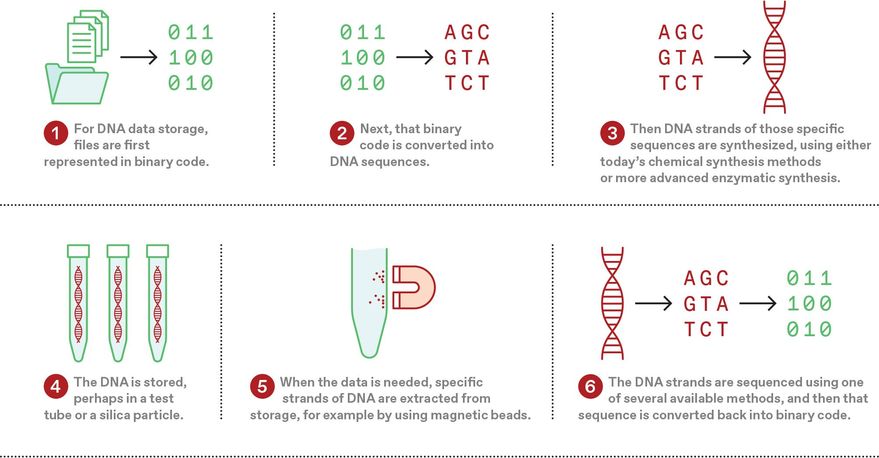I was curious about the philosophy’s appeal, so I spoke with seven Montessori-parenting adherents. Some were stay-at-home parents; others had to balance caregiving with paid work. Many told me about being nervous first-time parents who just wanted a child-rearing style to rely on. Indeed, Mairin Augustine, a researcher who studies parenting, told me that applying Montessori educational ideas to raising kids can amount to good parenting. (Even if it is dressed up in impressive branding and comes with a whole lot of merch.) But while Montessori parenting can be rewarding, it can also be particularly expensive and labor-intensive.
Of course, TikToks like the one of Carter cooking leave a lot out. Clearly this wasn’t his first time in the kitchen. (LauraLove does have other videos where she teaches her sons to cook, and admitted in a comment that she gave Carter “a little help here & there,” but said he “remembered & did most of it on his own.”) As any parent will tell you, such videos just aren’t representative of what cooking with young kids is typically like.
“Make time for your child to do things in her own way and at her own pace,” the Association Montessori Internationale’s parenting website
preaches. A lovely idea, but not exactly a practical one for many parents. When making muffins, for example, Nicole Kavanaugh, the creator of a Montessori-parenting
blog and
podcast, told me that she might be eager to dump the batter into the tin, “but my child might want to sit and whisk.” Waiting for a kid to finish can be logistically disruptive, but for Kavanaugh, the greater struggle was often mental. She described literally sitting on her hands to stop herself from intervening in one of her children’s tasks.
Depictions of Montessori parenting, particularly on social media, can make it seem like a prescription for idyllic family life—they suggest that your kid, too, could be cooking fancy Italian meals at age 4, and that tantrums could be easily defused by empathetic conversation, and that your home could also be effortlessly tidy, if you just adopted Montessori. But raising kids isn’t so simple, and even parents who are willing and able to invest the money, time, and emotional work in this method may find themselves disappointed when expectations butt up against reality. Ultimately, no one can escape the hard truth: No matter how hard you work to organize a playroom, you can’t eliminate chaos or uncertainty from parenting.
The montessori approach to parenting is rooted in a respected pedagogical system started in the early 20th century by the Italian educator Maria Montessori. She preached that kids were innately orderly, focused, and self-motivated, and should be given freedom to choose what they learn. She believed that play is educational, and she filled schoolrooms with what others saw as mere toys. She found value in housework, too, and had students do chores as part of their lessons. She lamented that the world was not built to be accessible to children—and she created a school that was. Its philosophy lives on in the many modern-day schools that bear her name.
When Simone Davies, the author of the popular book
The Montessori Toddler, discovered the approach about 20 years ago, Montessori schools had already
started to proliferate in the U.S. Yet Davies, who is based in Amsterdam, struggled to find any books that explained how to implement these principles at home. But over the past decade, Kavanaugh told me, platforms such as Instagram and YouTube have become a “breeding ground” for Montessori parenting. Those platforms are visual, and the philosophy lends itself well to striking aesthetics: The playrooms tend to be clean and minimalist; watching a 2-year-old chop vegetables is mesmerizing. “It was just this perfect storm,” Kavanaugh said. Add the tie to a prestigious educational brand, and it’s no wonder the approach has taken off.
But much of what is labeled Montessori today has little meaningful association with the original philosophy. Because the name was
never trademarked, anyone can use it. (The
Association Montessori Internationale, which Maria
co-founded with her son, offers certifications to schools and teachers, but those are optional.) So-called Montessori toys abound: See, for example, the Pikler triangle—also
billed as a “Montessori Climber,” despite having been
created by a different pioneer in early education—a sort of glorified ladder that sells for as much as $299. The Montessori aesthetic has become so heavily marketed that if you mention Montessori on a parenting board, people may think you mean beige wooden blocks, not a radical pedagogical approach that centers children’s needs.
The actual parenting philosophy is adapted from Maria’s educational principles as well as
comments she made about parents’ role in child development. At its core, Montessori parenting is defined by three main features. The first, and most important, Davies told me, is a gentle and respectful way of interacting with children that does away with traditional discipline and encourages independence. The second involves creating what is known as a “prepared space”: a well-organized area for kids to play in, with child-size furniture and objects that are all within the child’s reach. The final element is facilitating specialized activities depending on the kid’s age, which can be educational play or helping with chores—like cooking.
Psychologists generally agree that
the ideal parenting style is “authoritative” and is characterized by high levels of warmth and control. That means “having consistent messages about what I want from you, but knowing that I love you,” Augustine told me. Many of Maria’s ideas fit nicely under that umbrella. Certain fringe Montessori beliefs are not evidence-backed. (For instance, Maria
notoriously preached that cribs,
the safest place for infants to sleep, were inhumane cages.) But the overall approach is largely aligned with that authoritative-parenting ideal. (...)
The parents I spoke with who answered that call weren’t necessarily expecting perfection, nor were they completely drawn in by social media’s illusions. Still, when Montessori didn’t work as expected, they tended to be disappointed. Many blamed themselves, but few criticized the philosophy itself. Indeed, Montessori has a principle that makes it customizable but also impossible to disprove: “Follow the child”—which roughly means Be responsive to your kid. So, for example, if a kid doesn’t like a Montessori-style activity a parent spent hours creating, that doesn’t mean something’s wrong with the activity; that means the parent didn’t understand their child’s needs. (...)
Montessori is remarkable for the extent to which it takes children seriously, involving innovations small (art hung at kids’ eye level in their own rooms) and large (putting play at the center of children’s education). The parenting style encourages kids to express themselves—and sometimes, for toddlers, that self-expression involves throwing fits. No amount of respect for your children’s emotional life can change that. The implication that Montessori would make parenting orderly and predictable was always doomed to fail. But the philosophy does give parents something to steady themselves while living through the havoc of helping someone else grow up.
Image: Katie Martin
[ed. Just treat them like normal people, which means not being overly authoritative or protective (a necessity sometimes, but children know when it's needed), or talking down to them; mainly just being yourself and letting them see and interact with you as your own self, not just a parent. It provides a good baseline and context for their own growth (hopefully); and mutual respect. And don't forget to help and support them in finding their own interests and independence. See also:
Protocols for Excellent Parenting & Improving Relationships of All Kinds (Huberman Lab):]




















